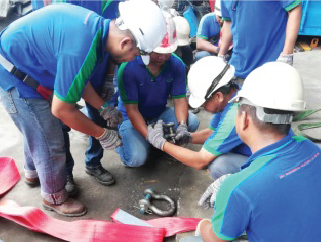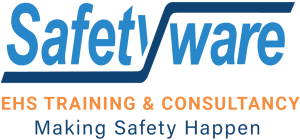Rigging Slinging Training
The rigging and slinging training is for personnel who supervise or are directly involved in rigging and lifting operations, including crane lifting. Practical exercises provide ample opportunity to demonstrate the safe and correct use of equipment.

Objectives
At the end of the course, the participant will be able to :● The role of the Rigger and an Introduction to Lifting Operations
● Rigging and Lifting Operations
● Understand Common Causes of Fire
● The banksman’s role
● Slinging operations
Duration
2 days (For more details, feel free to contact us: 012-498 7882)Course Contents

The role of the Rigger and an Introduction to Lifting Operations
● Identify typical installation/site responsible roles
● Identify and briefly explain typical roles involved in lifting operations
● Identify and list typical hazards associated with rigging and lifting activities
● Identify and list typical hazards associated with rigging and lifting activities
● Identify the various types of personal protective equipment (PPE) the Rigger would typically use

Rigging and Lifting Operations
● Identify which types of lifting equipment to use for different lifting activities, explain their purpose and how to use the equipment
● Conduct a lifting operation working from, and conforming to detailed criteria contained within a lifting plan
● Demonstrate progressively ‘inching’ up the load to check the balance and security of the load
● Demonstrate rigging up unbalanced loads (loads with an offset centre of gravity)
● Demonstrate safe body and hand positions during the rigging and lifting operation
● Demonstrate moving the load at minimum height necessary to avoid obstacles, locating and lowering the load to its planned location and position
● Demonstrate safe methods of disconnecting the load from the lifting equipment

Introduction to Lifting Operations
● Lifting Equipment and Lifting Operations Regulations
● Hazards associated with lifting operations and the appropriate control measures
● The difference between SWL and WLL of lifting equipment
● Classification of lifts i.e. routine and non-routine
● Determining the load bearing capabilities of the lay down area
● The disposal of any waste in relation to legislation and procedures

The Banksman’s Role
● The importance of the Banksman’s role
● Checking the cargo manifest and reviewing the load
● The need for communicating hand signals clearly
● What is meant by ‘line of sight’ and a ‘blind lift’
● The hand signal for ‘emergency stop’
● Establishing and using two way radio communications

Slinging Operations
● Different types of slings and sling identification markings
● Principles of sling angles and tensions
● Using appropriate lifting accessories
● Attaching slings to ensure a safe and even weight distribution
● Securing the cargo within a container/half height using ratchet straps
● Unhooking and removing slings and disconnection of lifting equipment
Get in Touch
Thanks for your interest in Safetyware EHS Consultancy.You can also click [Contact Us] to learn more about the Safetyware EHS Consultancy training program through Whatsapp.
Plot 237,
Lengkok Perindustrian Bukit Minyak 3,
Bukit Minyak Industrial Estate,
14100 Simpang Ampat, Penang, Malaysia.
Enquiries :
[email protected]
Call Us :
Tel : +604-5023 882 (8 lines)
Toll Free : 1300-22-3882
